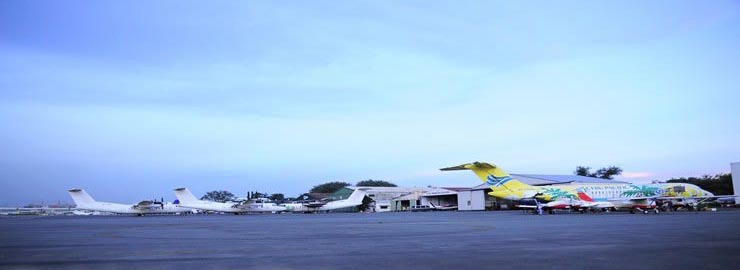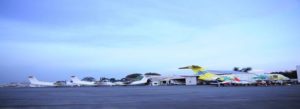

Strictly implementing existing and new measures and prioritizing commercial flights other than general aviation have improved the on-time performance of airlines at the Ninoy Aquino International Airport (NAIA), according to a Department of Transportation (DOTr) official.
Transportation Undersecretary for Aviation Roberto Lim, in a Senate hearing September 22 on the bills seeking to give emergency powers to the government, said that since flights of general aviation, or non-commercial flights, in NAIA have been limited, there was a “marked improvement” in the on-time performance of airlines, rising from the previous 50% to 70%, based on initial data compiled so far.
Since September 5, general aviation has been barred from flying during the critical hours of 12 p.m. to 7 p.m.
DOTr and Manila International Airport Authority (MIAA) are also strictly enforcing the five-minute rule on airlines, which Lim noted has induced a positive behavioral change.
“The pilots normally are overeager to secure being ahead in the queue to take off. Sometimes they ask their permission to take off ahead of their readiness and it adds to the complexity of managing the situation on the ground,” Lim explained.
“So the five-minute rule now says that if you violate it, if you are not ready and declare that you are, then you will be put at the back of the queue. It’s a simple rule but a very transparent rule that instills discipline,” he added.
The transport official said other processes have likewise been adopted regulating the use of runways and taxiways “so there’s more efficiency in the movement of traffic.”
Putting priority on commercial and bigger aircraft “with more economic benefits in the country” above private and low-seating capacity planes “should open up space” in NAIA, he added.
Lim said air transport officials recently visited Sangley airport in Cavite, the proposed site for the transfer of all general aviation flights, to check what civil works should be done to allow the area to accommodate the aircraft transfer.
In an online presentation, low-cost carrier Cebu Pacific Air said its on-time performance went up 12% when MIAA increased bay flexibility at Terminal 3. Its on-time performance improved further by 20% in September when approved schedules were strictly enforced, and another 11% improvement was observed when non-commercial flights and private planes were prohibited from flying between 12 p.m. and 7 p.m.
Cebu Pacific said the removal of colorum flights and reduction in non-commercial flights at the main gateway of NAIA helped to lessen flight delays as well.
Aside from enforcing the rules, civil works as well as technology processes are to be undertaken to improve capacity at NAIA.
To complement all these, Lim said Clark International Airport (CRK) will be developed to accommodate more traffic.
“We will ask the airlines to make a determination on which domestic destination they can move to Clark,” Lim said.
Cebu Pacific already started operating some domestic and international flights out of CRK, while flag carrier Philippine Airlines has agreed to operate flights from the Northern Luzon hub.
While flights at CRK are being increased, Lim said DOTr is working hand-in-hand with the Department of Tourism to develop Clark as a tourism hub to build passenger traffic at the airport.
Recently, the Department of Labor and Employment, together with DOTr, opened a One-Stop-Shop Center for overseas Filipino workers at Clark Freeport Zone so those based in Northern Luzon and even Quezon City residents can fly out of CRK instead of NAIA.
Aside from increasing CRK’s utilization, Lim said DOTr plans to night-rate provincial airports to allow flights during nighttime, which should help to decongest daytime flights at NAIA.
Legazpi airport, for one, will be night-rated starting October 1, according to the Civil Aviation Authority of the Philippines (CAAP).
Other civil works, institutional reform, and policy measures to improve the country’s aviation sector have been proposed for inclusion in the set of emergency powers that Congress plans to grant the government before the year ends, as these initiatives are seen to help address the transportation woes in Metro Manila and other areas.
MIAA general manager Ed Monreal said his agency has been closely coordinating with other aviation authorities such as the Civil Aeronautics Board and CAAP, especially now that the peak season is coming. He added that all these measures would be deemed a success only after an assessment of their peak season performance.




